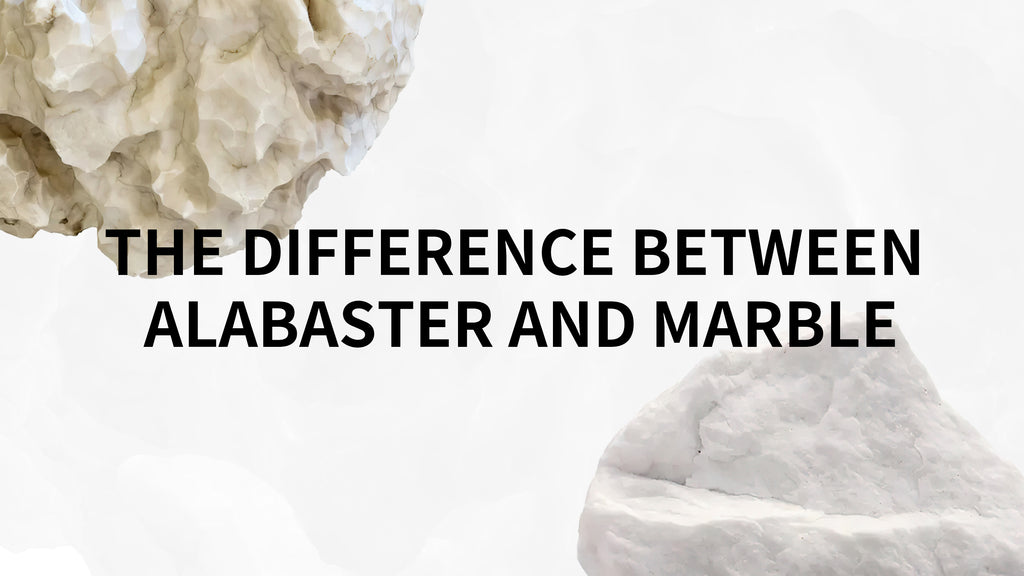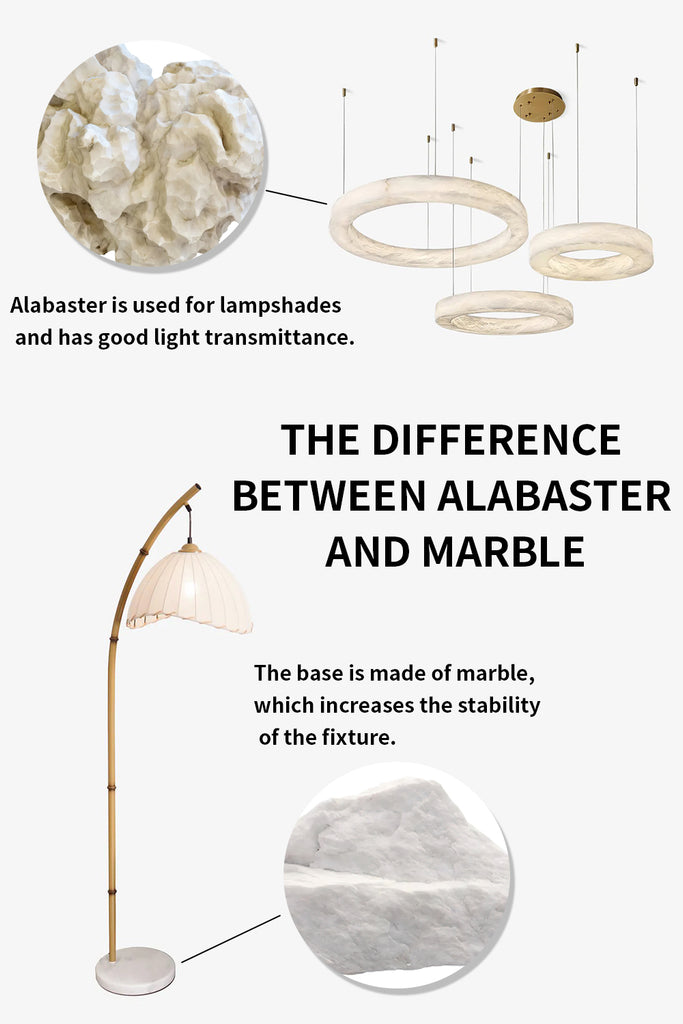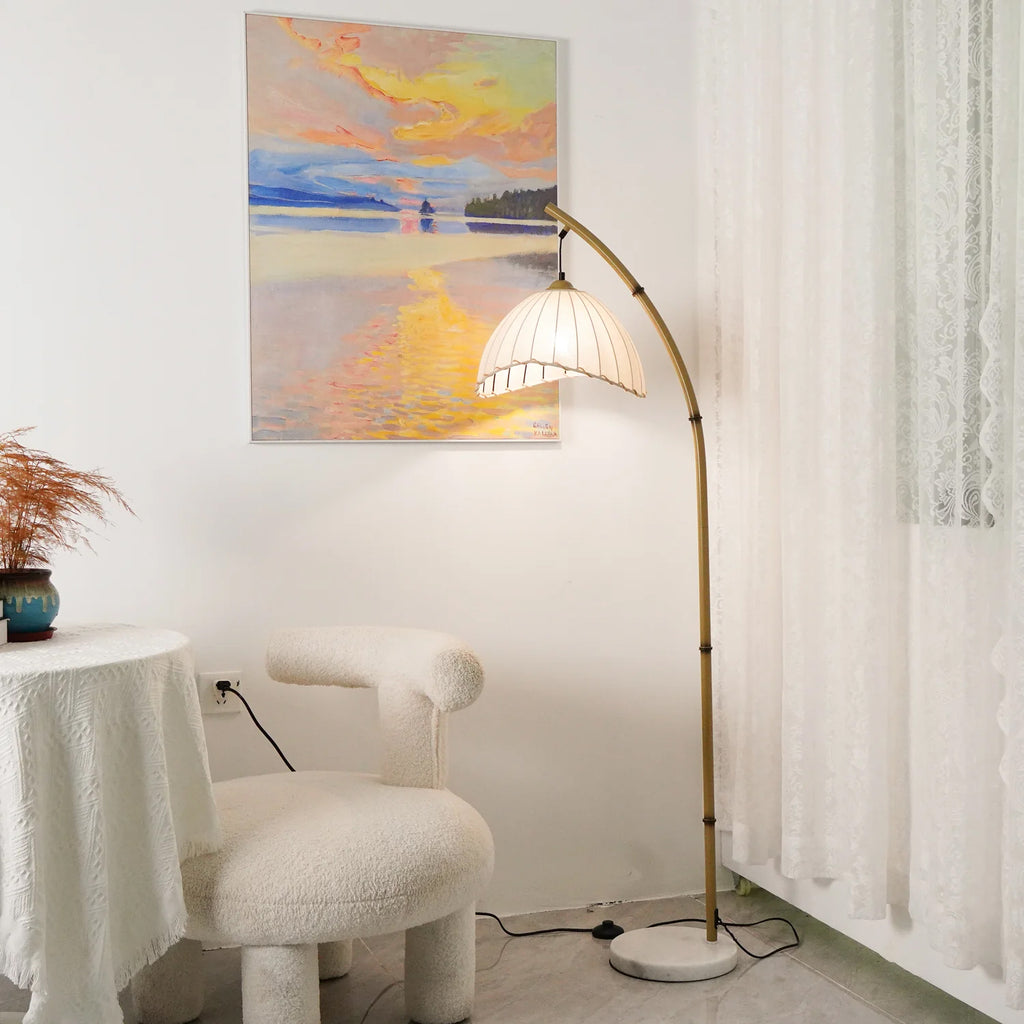Aren’t Alabaster and Marble the Same Material? Understanding the Differences and Their Unique Qualities

When it comes to luxurious home decor, alabaster and marble often come to mind as materials that exude elegance and timeless beauty. However, many people are unsure about the differences between these two materials, sometimes even confusing one for the other. While both alabaster and marble are revered for their aesthetic appeal and have been used in art and architecture for centuries, they are distinct materials with unique properties. In this blog, we’ll delve deeper into the characteristics, uses, and differences between alabaster and marble, helping you make informed decisions when choosing the right material for your home decor.
What is Alabaster?
Alabaster is a soft, fine-grained sedimentary rock that is typically white or translucent in appearance. It has been prized for its beauty and workability since ancient times, often used for carvings, sculptures, and decorative objects. The softness of alabaster allows it to be easily carved into intricate designs, making it a favorite among artisans and sculptors.
![]()
Key Characteristics of Alabaster:
- Appearance: Alabaster is known for its translucent quality, allowing light to pass through it, which gives it a soft, glowing effect. This characteristic makes it an excellent choice for lamps, light fixtures, and decorative objects where light is a focal point.
- Softness: Alabaster is a relatively soft material, ranking around 2 on the Mohs hardness scale. This softness makes it easy to carve and shape, but it also means that alabaster can be prone to scratches and damage if not handled with care.
- Color: While alabaster is commonly white, it can also be found in shades of cream, pink, and even brown. The natural variations in color add to its unique charm.
- Workability: Due to its softness, alabaster is ideal for detailed carvings and delicate designs. However, this also means it is less suitable for high-traffic areas or surfaces that require durability.
Common Uses of Alabaster:
- Lighting Fixtures: Alabaster’s translucent nature makes it a popular choice for lampshades and light fixtures. When illuminated, alabaster emits a warm, ambient glow that adds a touch of luxury to any room.
- Sculptures: Alabaster’s ease of carving makes it a preferred material for sculptures, particularly in classical and traditional designs.
- Decorative Objects: From vases to ornamental boxes, alabaster is often used to create beautiful decorative pieces that enhance the aesthetic of any space.
What is marble?
![]()
What is Marble?
Marble is a metamorphic rock formed from limestone that has undergone intense heat and pressure, resulting in its distinctive crystalline structure. Marble is known for its durability, elegance, and the wide variety of colors and patterns it offers. It has been a symbol of luxury and refinement since antiquity, famously used in iconic structures like the Parthenon and Michelangelo's David.
Key Characteristics of Marble:
- Appearance: Marble is recognized for its distinctive veining and variety of colors, ranging from pure white to deep black, with shades of green, pink, and blue in between. The veining patterns are caused by impurities in the limestone, giving each piece of marble a unique look.
- Hardness: Marble is harder than alabaster, ranking around 3 to 4 on the Mohs hardness scale. While it is still softer than granite, marble is much more durable than alabaster, making it suitable for surfaces that experience regular use.
- Polishability: Marble can be polished to a high gloss, enhancing its natural beauty and making it a popular choice for countertops, floors, and other surfaces where a luxurious finish is desired.
- Cool Surface: Marble tends to remain cool to the touch, which is why it’s often used in warmer climates and for surfaces like countertops and floors.
Common Uses of Marble:
- Countertops and Flooring: Marble’s durability and ability to be polished make it a preferred choice for countertops, bathroom vanities, and flooring in high-end homes and commercial spaces.
- Sculptures and Architectural Elements: Like alabaster, marble has been used for centuries in sculptures and architectural details, but its durability allows it to withstand the test of time, making it suitable for large-scale structures and outdoor use.
- Fireplaces and Mantels: Marble’s heat resistance and aesthetic appeal make it a popular choice for fireplaces and mantels, adding a touch of elegance to living spaces.
How to tell the difference between marble and alabaster?
Comparing Alabaster and Marble
While alabaster and marble share some similarities, they are distinct materials with different characteristics and uses. Here’s a comparison to help you understand their differences:
- Hardness: Marble is harder and more durable than alabaster, making it suitable for surfaces that need to withstand wear and tear, such as countertops and floors. Alabaster, being softer, is better suited for decorative objects and light fixtures.
- Appearance: Alabaster is known for its translucence, which allows light to pass through, creating a soft glow. Marble, on the other hand, is prized for its veining and color variations, which add depth and character to any space.
- Workability: Alabaster’s softness makes it easy to carve, allowing for intricate designs, while marble’s hardness requires more skill and effort to shape but results in a highly durable finish.
- Maintenance: Both materials require care to maintain their beauty. Alabaster, being softer, is more susceptible to scratches and should be kept away from harsh environments. Marble, while more durable, can still be prone to staining and etching, especially when exposed to acidic substances.
Which Should You Choose?
The choice between alabaster and marble depends on your specific needs and the aesthetic you wish to achieve. If you’re looking for a material that offers a soft, glowing light and can be carved into intricate designs, alabaster is an excellent choice. It’s perfect for creating a warm, inviting atmosphere in your home with lighting fixtures and decorative pieces.
If durability and the timeless elegance of natural stone are your priorities, marble is the way to go. Its versatility and range of colors make it ideal for everything from countertops to flooring and even large sculptures.
Application in lighting fixtures
In the world of lighting fixtures, the use of materials speaks volumes about the style and atmosphere a piece brings to a space. Alabaster and marble each have their own unique qualities and have carved their own niche in the lighting industry.
Known for its creamy texture and translucent properties, alabaster is a favorite among lighting design circles. When alabaster is fashioned into lampshades or incorporated into lighting fixtures, it softly diffuses light, creating a warm and inviting atmosphere. Its ability to allow light to pass through adds a certain depth and nuance to lighting. Designers often choose alabaster for wall sconces, chandeliers and table lamps, with the goal of achieving a soft, warm glow that enhances the comfort of living spaces.
Ideal for spaces that require soft, non-glare light. Alabaster sconces and pendants are popular in dining areas, living rooms and bedrooms. They often feature slates or panels that reveal the natural pattern of the stone when illuminated.
With their sturdiness and classic texture, marble fixtures are often synonymous with luxury and durability. Due to its opacity, marble is less common than alabaster in light-diffusing applications, but it excels as a structural and decorative element. Marble bases for table and floor lamps provide a sturdy yet stylish foundation, while marble accents in chandeliers or lamp bases add a touch of opulence and grandeur.
Ideal for areas that require a bold statement. Marble is often used as the base of a floor lamp, as part of a decorative table lamp, or as a structural component of overhead lighting. The weight of the marble adds stability to the fixtures, while its calm elegance brings a sense of timelessness and luxury.
Choice between alabaster and marble
Choosing alabaster or marble in lighting fixtures depends on aesthetic preferences and functional requirements. The warm brilliance of alabaster is suitable for environments where mood lighting is key, while the stately chic of marble is ideal for formal or design-forward settings.
For designers and homeowners alike, understanding the properties of alabaster and marble can open up a range of design possibilities. Whether it’s the captivating glow of an alabaster chandelier or the stately look of a marble floor lamp, these materials can be used to create lighting that’s not only functional but inspiring.
Alabaster and marble each bring their own unique qualities to the table, and understanding their differences can help you make the right choice for your home decor. Whether you’re drawn to the soft translucence of alabaster or the robust elegance of marble, both materials offer a touch of luxury that can enhance any space. By considering their characteristics and how they align with your needs, you can select the perfect material to elevate the beauty and functionality of your home.































Deixe um comentário